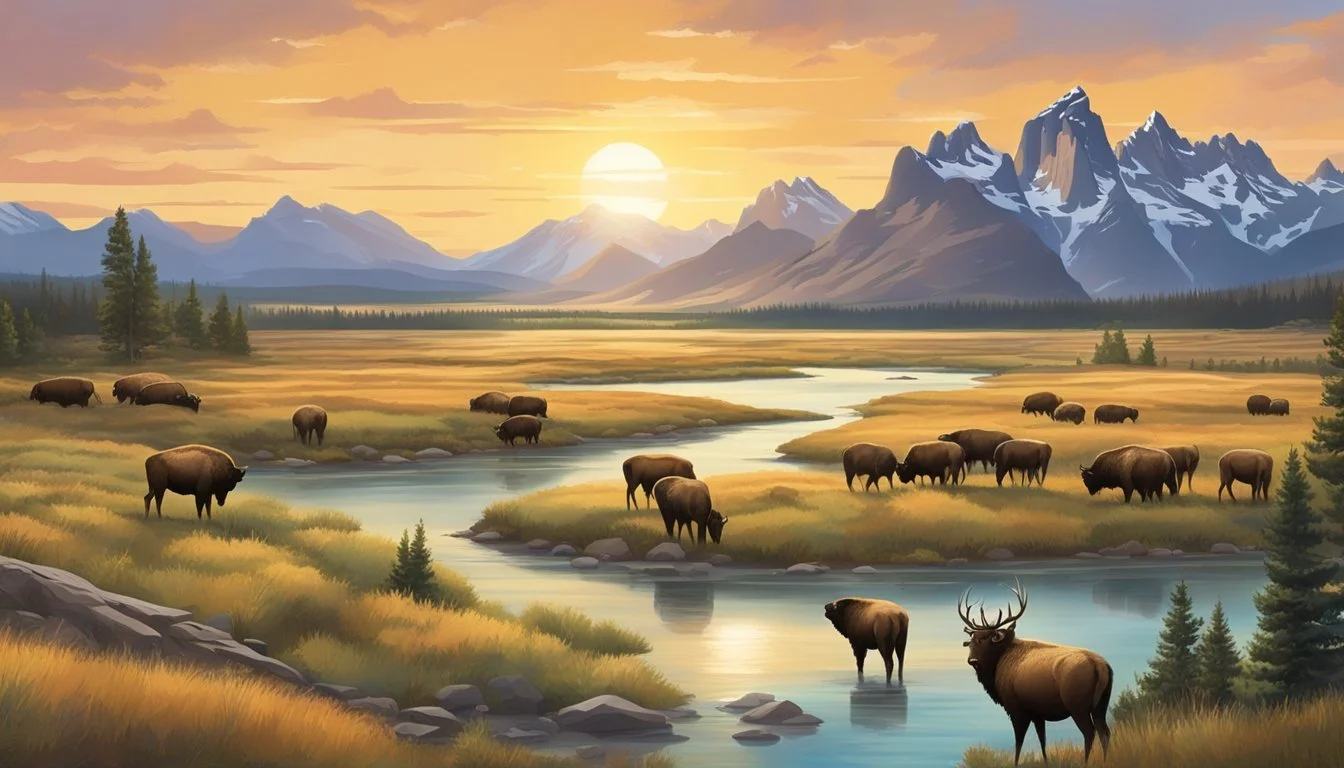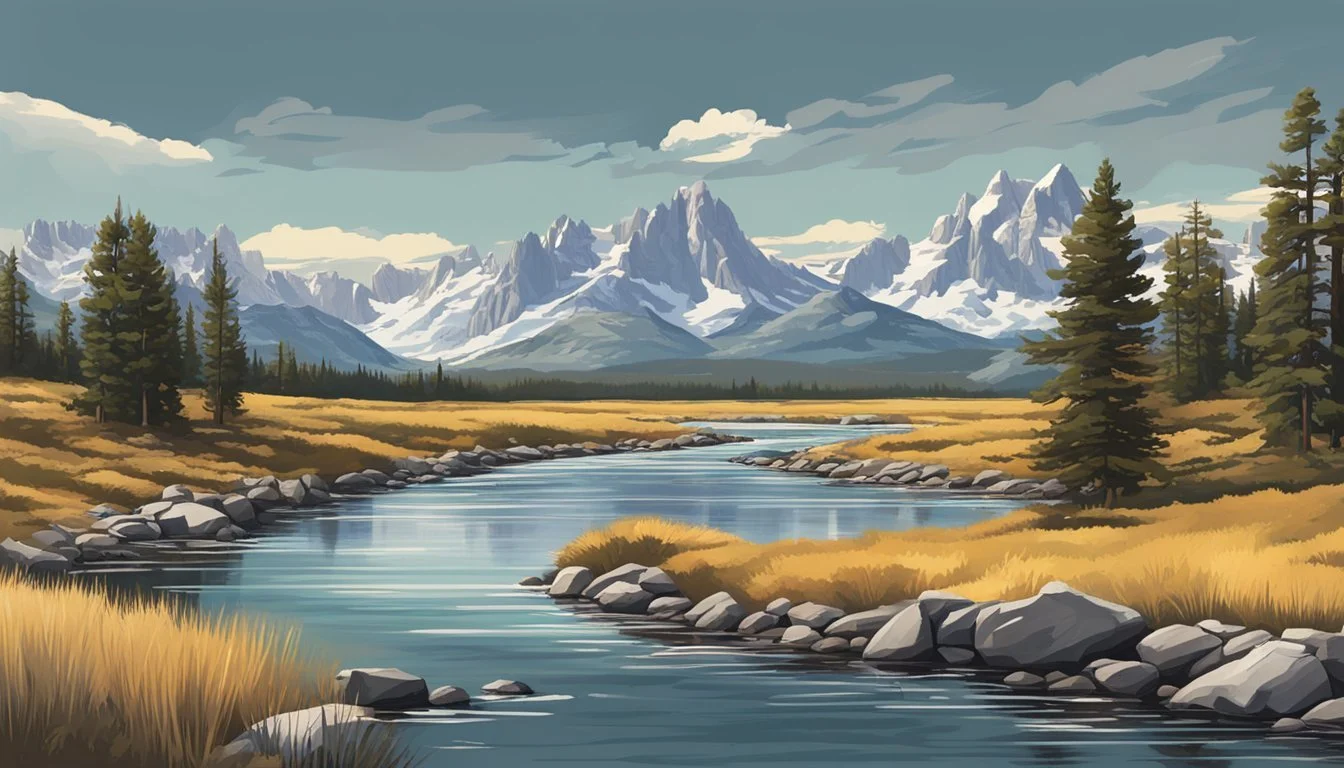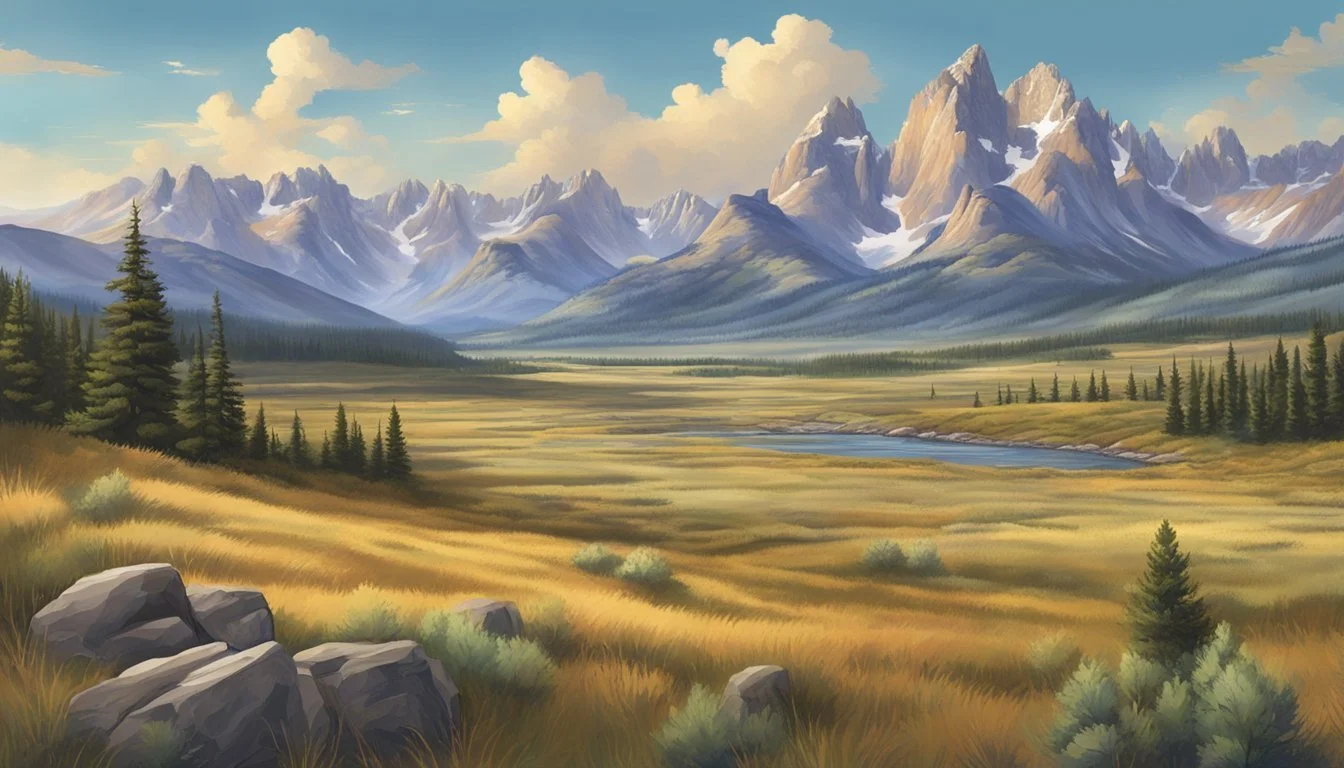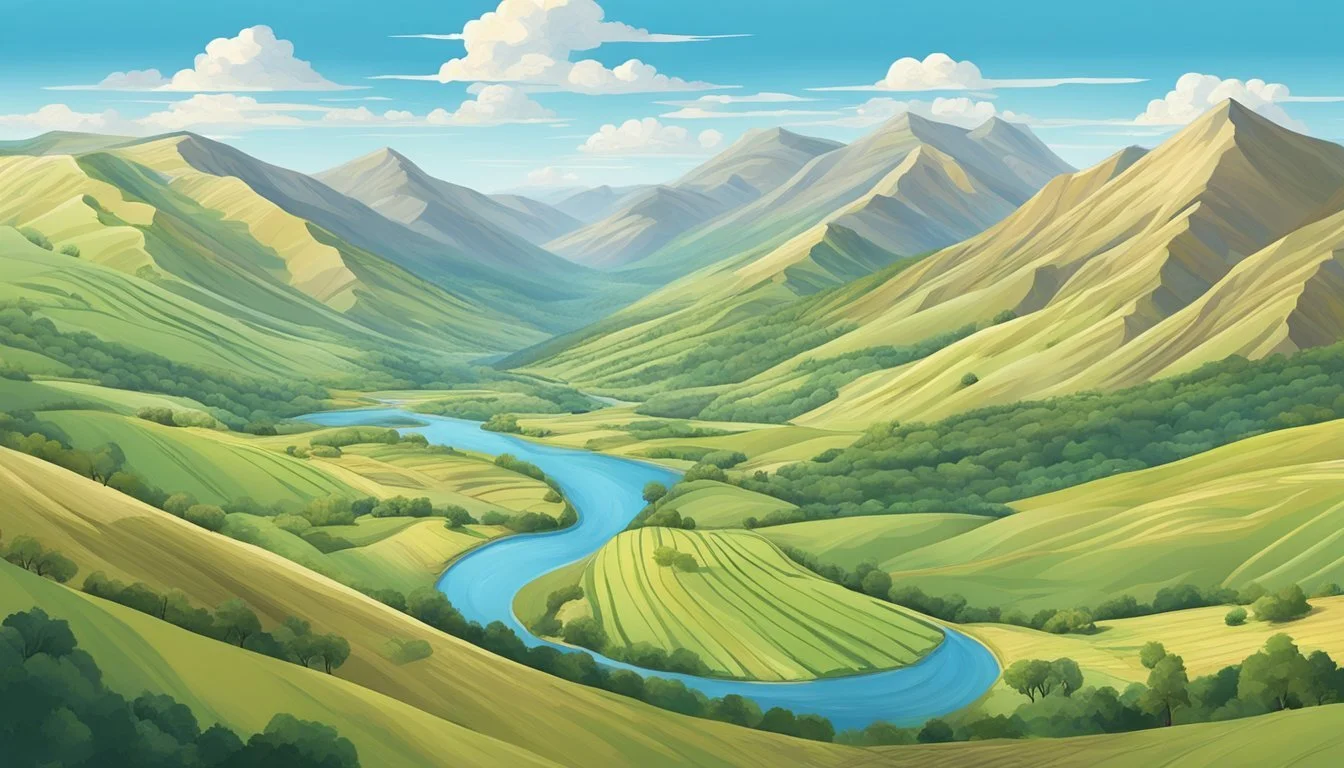5 Captivating Documentaries on Wyoming
Unveiling the Wild West's Hidden Gems
Wyoming's rugged landscapes and rich history have captivated filmmakers for decades. From its sprawling national parks to its small-town mysteries, the Equality State offers a diverse canvas for documentary storytellers to explore.
These five documentaries showcase Wyoming's natural wonders, cultural heritage, and untold stories, providing viewers with unique insights into the state's character and complexity. Each film offers a different perspective on Wyoming, delving into topics ranging from geological marvels to true crime cases that have shaped local communities.
1) 'Wind River' by Taylor Sheridan
'Wind River' is a gripping crime thriller set against the stark backdrop of Wyoming's Wind River Indian Reservation. Released in 2017, this neo-Western film was written and directed by Taylor Sheridan.
The story follows a U.S. Fish and Wildlife Service tracker and an FBI agent as they investigate the murder of a young Native American woman. Jeremy Renner and Elizabeth Olsen star in the lead roles, delivering powerful performances.
Sheridan's film explores themes of loss, justice, and the harsh realities of life on the reservation. It sheds light on the often-overlooked issue of missing and murdered Indigenous women.
'Wind River' is notable for its taut screenplay and atmospheric cinematography that captures the unforgiving Wyoming landscape. The film's tension builds steadily, culminating in a riveting climax.
Critics praised 'Wind River' for its authentic portrayal of reservation life and its unflinching approach to difficult subject matter. It serves as a thought-provoking look at a corner of America rarely depicted on screen.
2) 'The Laramie Project' by Moisés Kaufman
'The Laramie Project' is a powerful documentary-style play created by Moisés Kaufman and members of the Tectonic Theater Project. It examines the aftermath of Matthew Shepard's murder in Laramie, Wyoming in 1998.
The play is based on over 200 interviews conducted with Laramie residents over an 18-month period following the hate crime. It presents a poignant portrayal of a community grappling with prejudice and violence.
Kaufman and his team crafted the play using verbatim excerpts from interviews, news reports, and court documents. This approach lends authenticity to the voices and perspectives presented on stage.
'The Laramie Project' premiered in 2000 at Denver's Ricketson Theatre. It went on to be performed off-Broadway and in Laramie itself. The play has since been widely produced by theaters, colleges, and high schools across the United States.
In 2002, Kaufman directed a film adaptation of 'The Laramie Project' for HBO. The film received critical acclaim and won several awards, including recognition from GLAAD.
3) 'American Nomads: Living Bare' by National Geographic
'American Nomads: Living Bare' offers a raw glimpse into the lives of those who choose to live on the road in Wyoming and beyond. This National Geographic documentary explores the rugged individualism of modern-day nomads traversing the American West.
The film captures the stark beauty of Wyoming's landscapes as a backdrop for these unconventional lifestyles. It follows several individuals who have abandoned traditional housing in favor of vans, RVs, and even tents.
Viewers are introduced to a diverse cast of characters, each with unique reasons for embracing nomadism. Some seek freedom from financial burdens, while others are driven by a desire for adventure and connection with nature.
The documentary delves into the practical aspects of nomadic living in Wyoming's challenging environment. It showcases innovative solutions for basic needs like food, water, and shelter in remote areas.
'American Nomads: Living Bare' also examines the social and emotional impacts of this lifestyle choice. It explores how these individuals build communities on the road and maintain relationships with family and friends.
Through stunning cinematography and intimate interviews, the film paints a nuanced portrait of modern nomads. It challenges viewers to reconsider conventional notions of home and success.
4) 'Wyoming: Triumphs of Nature' by John E. Haferman
'Wyoming: Triumphs of Nature' is a visually stunning documentary that showcases the natural beauty of Wyoming's diverse landscapes. Filmmaker John E. Haferman captures the state's rugged wilderness, from its towering mountains to its expansive prairies.
The film explores Wyoming's unique geological features, including the geothermal wonders of Yellowstone National Park and the dramatic peaks of the Grand Tetons. Haferman's camera work brings these natural marvels to life in breathtaking detail.
Viewers are treated to intimate glimpses of Wyoming's wildlife, including bison, elk, and grizzly bears. The documentary highlights the delicate balance of ecosystems within the state and the importance of conservation efforts.
'Wyoming: Triumphs of Nature' also touches on the state's rich cultural heritage, featuring interviews with local experts and longtime residents. Their insights provide context for the natural wonders on display.
Through its compelling imagery and informative narrative, this documentary offers an immersive experience of Wyoming's natural treasures. It serves as both an educational resource and a visual celebration of the state's wild beauty.
5) 'The Beartooth Highway: Gateway to Yellowstone' by PBS
This PBS documentary showcases the breathtaking Beartooth Highway, a 68-mile scenic route connecting Montana and Wyoming. The film explores the highway's role as a stunning entrance to Yellowstone National Park.
Viewers are treated to sweeping vistas of the Beartooth Mountains and surrounding wilderness areas. The documentary highlights the road's impressive engineering, which allows it to climb to elevations of nearly 11,000 feet.
The film captures the highway's seasonal changes, from snow-capped peaks to vibrant wildflower meadows. It also examines the impact of this scenic byway on local communities like Red Lodge, Montana, and Cooke City, Wyoming.
Wildlife enthusiasts will appreciate the documentary's footage of native species inhabiting the area. The filmmakers showcase the diverse ecosystems along the route, from alpine tundra to lush forests.
'The Beartooth Highway: Gateway to Yellowstone' provides a comprehensive look at this remarkable road. It offers viewers a virtual journey through one of America's most scenic drives, illustrating why it's often called the most beautiful in the country.
Wyoming's Natural Wonders and Their Impact
Wyoming's landscape captivates with its diverse geological formations and thriving wildlife ecosystems. These natural wonders shape the state's identity and draw visitors from around the world.
Geological Marvels
Yellowstone National Park stands as Wyoming's crown jewel of geological wonders. Its geothermal features, including the iconic Old Faithful geyser, attract millions of visitors annually. The park's colorful hot springs and bubbling mud pots showcase the dynamic forces beneath the Earth's surface.
Grand Teton National Park boasts jagged mountain peaks and pristine alpine lakes. Jenny Lake, formed by glaciers 12,000 years ago, reflects the towering Teton range in its crystal-clear waters. This glacial lake serves as a focal point for outdoor enthusiasts and photographers alike.
Tower Falls in Yellowstone plunges 132 feet, creating a mesmerizing spectacle. The waterfall's powerful cascade has carved intricate rock formations over millennia, demonstrating nature's artistic prowess.
Wildlife Habitat
Wyoming's varied landscapes provide crucial habitats for diverse wildlife species. Yellowstone's ecosystem supports large populations of bison, elk, and grizzly bears. These animals roam freely, offering visitors unparalleled opportunities for wildlife viewing and photography.
The state's high-altitude grasslands and forests shelter pronghorn antelope, mule deer, and numerous bird species. Wyoming's commitment to conservation helps maintain these vital habitats, ensuring the survival of native fauna.
Rivers and lakes teem with trout and other fish species, supporting both recreational fishing and natural food chains. The presence of apex predators like wolves and mountain lions indicates a healthy, balanced ecosystem.
Cultural and Historical Context
Wyoming's rich cultural tapestry and complex history provide vital context for documentaries about the state. The interplay between indigenous peoples and frontier settlers shaped Wyoming's unique identity and continues to influence its culture today.
Indigenous History
Native American tribes inhabited Wyoming for thousands of years before European contact. The Arapaho, Cheyenne, Crow, and Shoshone were among the major tribes in the region. These groups developed sophisticated cultures adapted to Wyoming's varied landscapes.
Sacred sites like the Bighorn Medicine Wheel demonstrate the spiritual significance of the land to indigenous peoples. Tribal histories often clash with narratives of manifest destiny and westward expansion.
Documentaries exploring Wyoming's indigenous history shed light on traditional lifeways, forced relocation, and modern efforts to preserve Native cultures. The Wind River Reservation, home to the Eastern Shoshone and Northern Arapaho tribes, remains an important center of indigenous life in Wyoming today.
Frontier Life
The frontier era dramatically reshaped Wyoming's cultural landscape. Fur trappers, miners, and settlers flocked to the territory in the mid-1800s, drawn by economic opportunities and the promise of free land.
Wyoming gained fame as part of the Wild West. Cattle ranching boomed, leading to conflicts like the Johnson County War. The Transcontinental Railroad brought increased connectivity and immigration.
Women's suffrage became a reality in Wyoming Territory in 1869, decades before the 19th Amendment. This progressive stance earned Wyoming the nickname "The Equality State."
Frontier-themed documentaries often focus on iconic figures like Buffalo Bill Cody or everyday challenges faced by homesteaders. These films provide insight into the rugged individualism that became part of Wyoming's cultural identity.







